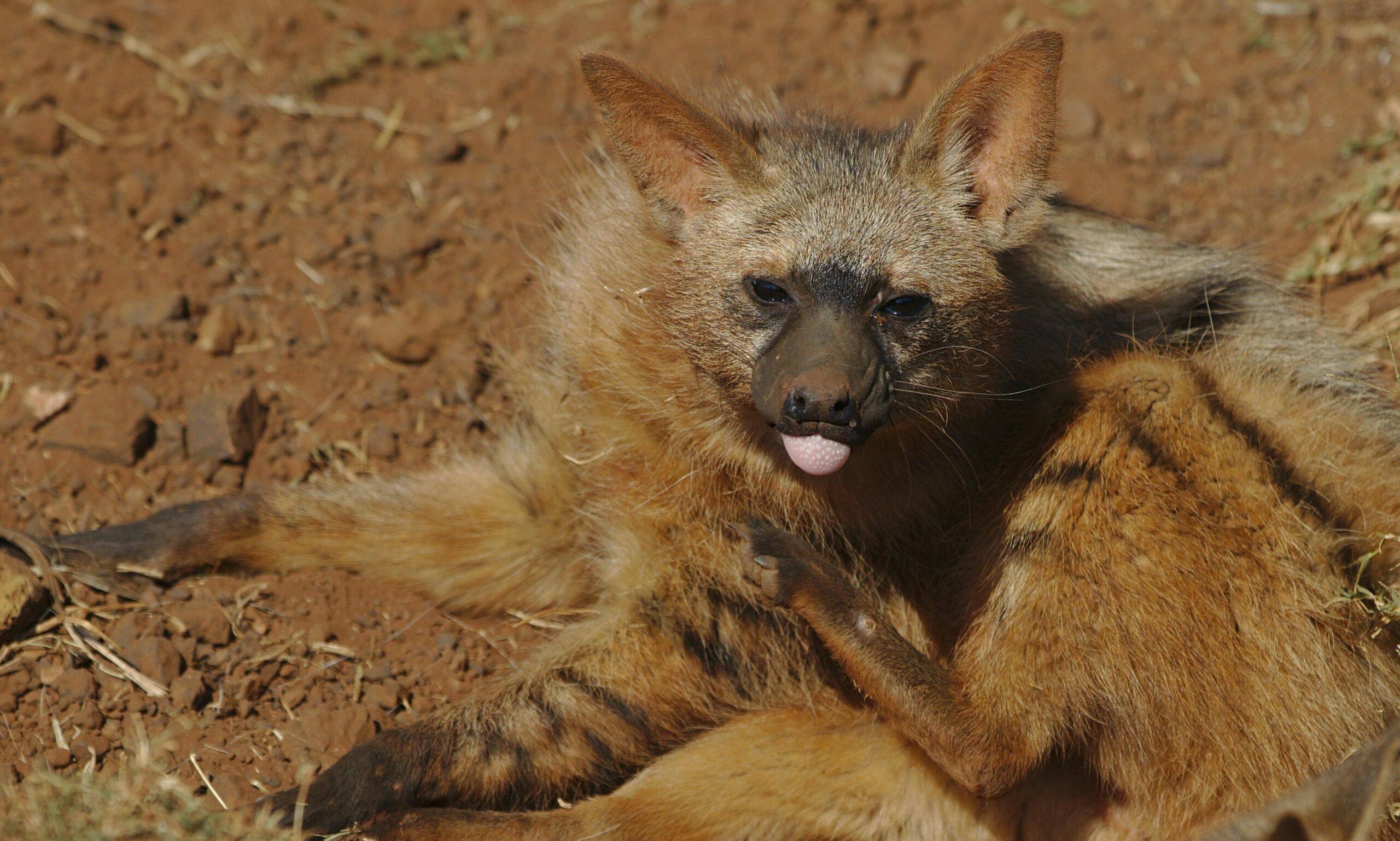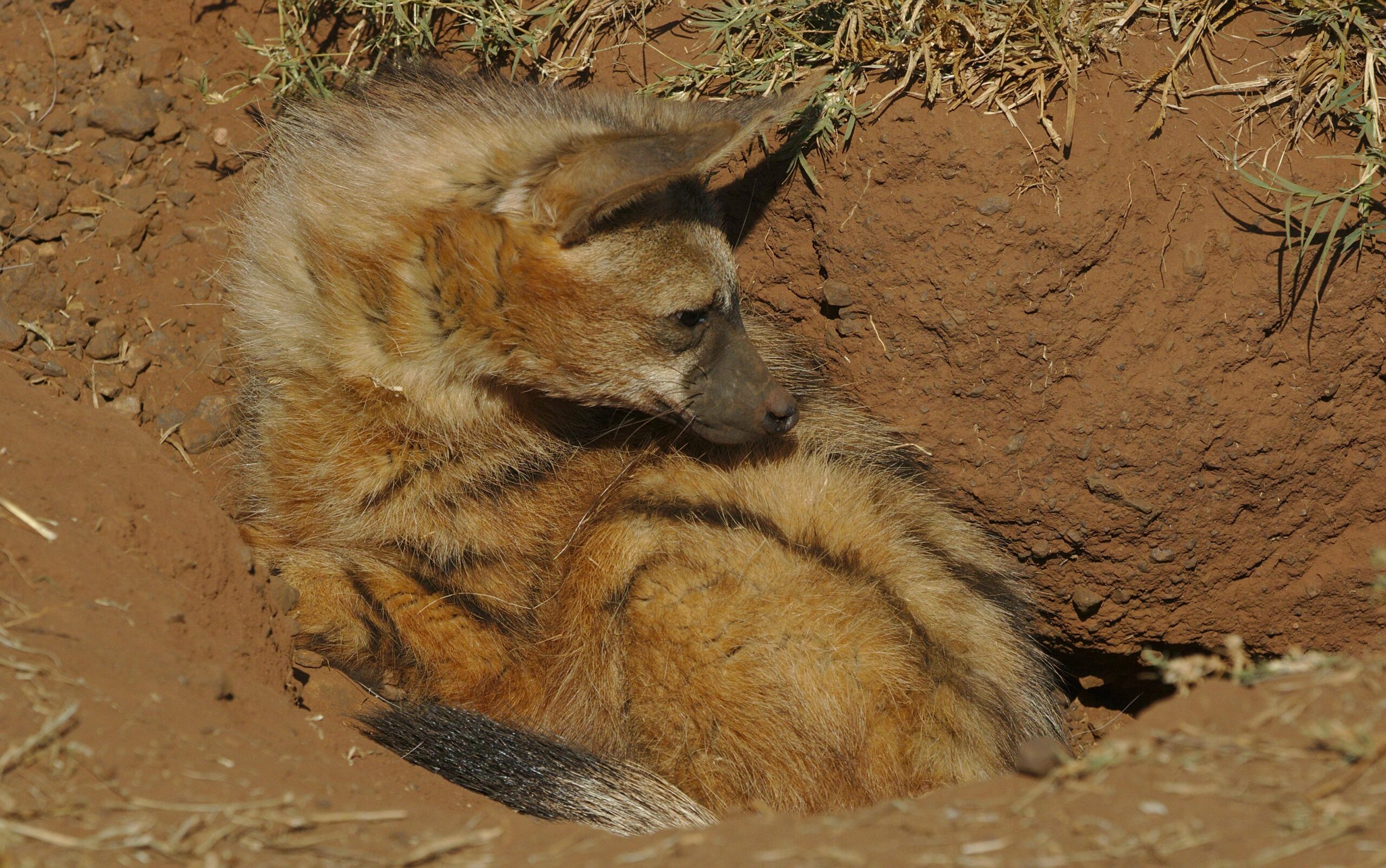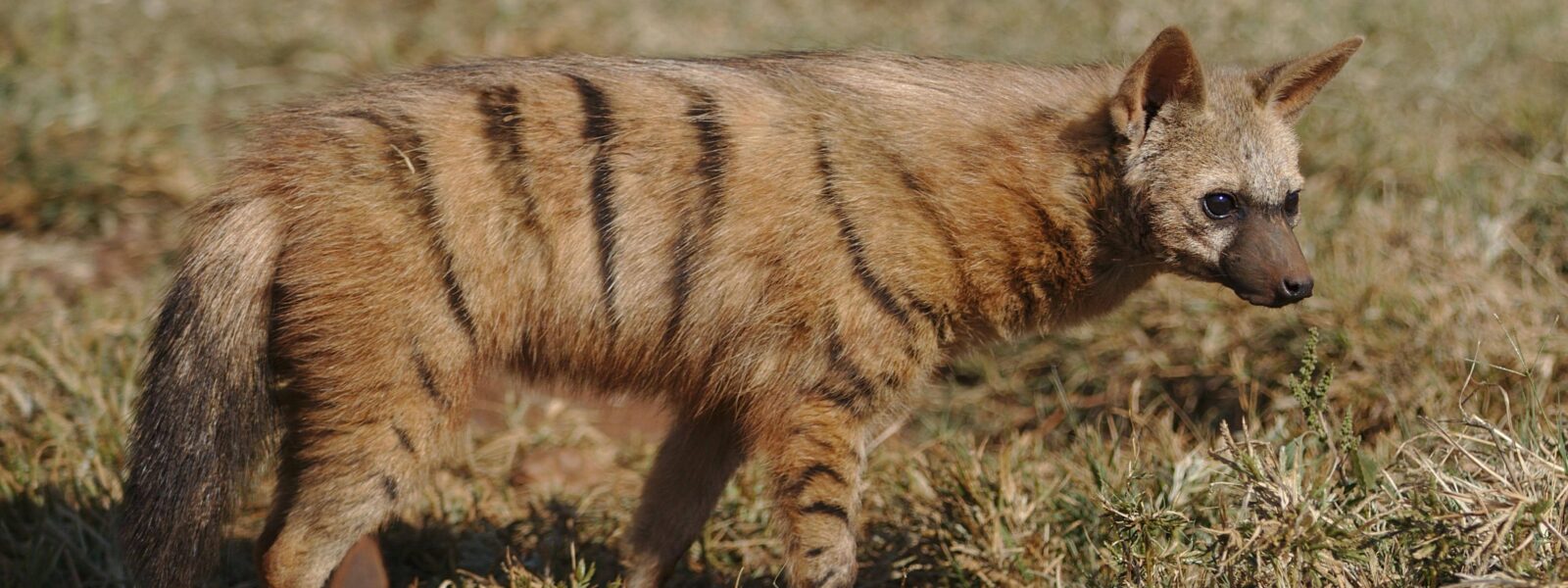The African night hides secrets and among them is a creature rarely seen but truly remarkable: The Aardwolf. Unlike the hyena, known for its eerie laughter, the aardwolf is a quiet and shy insect-eater that thrives under the cover of darkness. Its striped coat, foxlike face and mane that bristles when threatened make it look both mysterious and striking.
Aardwolf is far from being a scavenger or predator; this gentle mammal survives almost entirely on termites, consuming hundreds of thousands in a single night. Aardwolf is one of Kenya’s most unique wildlife gems, embodying the hidden wonders of the savannah.
The Aardwolf’s unique features
 Aardwolf belongs to the hyena family; unlike spotted or striped hyenas, the aardwolf has several remarkable differences:
Aardwolf belongs to the hyena family; unlike spotted or striped hyenas, the aardwolf has several remarkable differences:
Nocturnal lifestyle
Aardwolf spends its days hidden in burrows and venturing out after dusk. Under the cover of night, it roams silently across the plains, avoiding the attention of predators and humans alike.
Specialized diet
Unlike its bone-crushing relative, the hyena, the aardwolf feeds exclusively on termites. It has a long, sticky tongue, consuming nearly 250,000 termites in one night, making it one of the most specialized insect-eaters in Africa.
Distinctive appearance
Aardwolf’s sandy coat is marked with dark vertical stripes, a bushy tail and a fox-like face sets it apart. When threatened, aardwolf raises its thick mane of hair, doubling its apparent size and deterring attackers.
Monogamous and territorial
Aardwolves are loyal partners, living in monogamous pairs and fiercely defending their territories. They use scent and marking to communicate and keep rivals away from their foraging grounds.
Ecological role
By controlling termite populations without destroying their mounds, aardwolf plays an important role in maintaining balance in the savannah ecosystem.
Where to find the Aardwolf in Kenya

Tsavo National Parks
Both East and West Tsavo National Park, aardwolf thrives in semi-arid scrublands where termites are abundant. They roam quietly at night, beneath the shadow of baobabs and scattered thorn trees.
Amboseli National Park
Amboseli is well known for its elephants and backdrop of Mount Kilimanjaro, and it also shelters aardwolves in their drier zones. On a night game drive, flicker of eyes in the spotlight may reveal this striped and elusive figure.
Laikipia Conservancies
Laikipia conservancies are a safe haven for lesser-seen wildlife and among them, aardwolf has found refuge. The strong conservation practices and fewer crowds make Laikipia offer one of the best chances to observe the species undisturbed.
Samburu National Reserve
Dry bushlands provide ideal habitat for aardwolf, visitors come across one trotting along the sandy ground, nose low as it follows the trail of termites.
Masai Mara National Reserve
Masai Mara is famous for lions and the Great Migration, and it also hides the shy aardwolf. Aardwolf is very active only at night, when quietly hunting termites across the plains and is rarely seen on standard game drives.
African night echoes with roars of lions and rustles of great herds, but in quiet shadows walks the aardwolf, a creature of mystery and subtle power. Its striped coat, raised mane, and nocturnal wanderings, the aardwolf stands as a reminder that Kenya’s wilderness is not about fierce and famous but also a hidden guardian of the ecosystem. To glimpse one under the moonlight is to witness the wild in its most secret and magical form.

